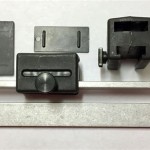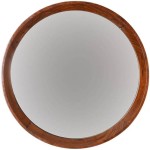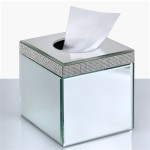How Heavy Is A Large Mirror?
Determining the weight of a large mirror involves considering several factors beyond just its size. Material composition, thickness, and the type of backing all play significant roles in the overall weight. This article explores the various elements that contribute to a mirror's heft and provides estimations for common large mirror configurations. Understanding these factors helps in planning for safe installation and handling.
Mirror Thickness and Weight
The thickness of the mirror glass is a primary determinant of its weight. Thicker glass provides greater structural integrity and durability but adds considerable weight. Standard mirror glass thicknesses range from 1/8 inch to 1/4 inch (3mm to 6mm) for most common applications. Larger mirrors often require thicker glass to prevent warping and distortion. For instance, a very large wall mirror or a full-length dressing room mirror might utilize 1/4 inch or even thicker glass. The weight difference between a 1/8 inch and 1/4 inch mirror of the same dimensions can be substantial, often doubling the weight. It is essential to consider the added weight when planning for installation, ensuring appropriate wall anchors and mounting hardware are used.
Mirror Material Composition: Effect on Weight
While most mirrors are made from standard soda-lime glass, specialty mirrors may utilize different glass compositions. These variations can affect the density and thus the weight of the finished product. For example, low-iron glass, commonly used in high-quality mirrors to reduce the greenish tint inherent in standard glass, can be slightly denser. Other specialized glass types, such as borosilicate glass (known for its thermal resistance), also have different densities. Antique mirrors, often made with thicker glass and potentially different manufacturing processes, can also be significantly heavier than modern counterparts. When dealing with non-standard mirror glass, consulting the manufacturer for specific weight information is crucial.
Impact of Backing Materials on Mirror Weight
The backing applied to a mirror provides protection and structural support. Common backing materials include a thin layer of silvering or aluminum for reflectivity, often followed by a protective coating of paint or a specialized film. While the reflective layer itself adds negligible weight, thicker protective coatings or backing boards can contribute to the overall weight. Some large mirrors may utilize a rigid backing board, such as plywood or medium-density fiberboard (MDF), for added stability. The thickness and density of these backing boards can significantly increase the total weight of the mirror. Safety backing films, designed to prevent shattering in the event of breakage, also contribute to the overall weight, albeit minimally. When handling or installing large mirrors, the weight added by backing materials should always be factored into the calculations.
Estimating the Weight of Large Mirrors
Estimating the weight of a large mirror requires knowing its dimensions (length and width) and the thickness of the glass. Approximate weights per square foot for various glass thicknesses can be found online or obtained from glass suppliers. Once the square footage of the mirror is calculated, it can be multiplied by the weight per square foot to arrive at an estimated weight. It's important to remember that these estimations often don't include the weight of the frame or backing materials, so adding an allowance for these components is advisable. For example, a heavy, ornate frame can add a significant amount of weight to a large mirror.
Safe Handling and Installation Considerations
Due to their size and weight, large mirrors require careful handling and specialized installation procedures. Attempting to lift or maneuver a large, heavy mirror without proper assistance or equipment can result in injury or damage to the mirror. Using appropriate lifting techniques, employing suction cup lifters, and ensuring sufficient manpower are essential for safe handling. Professional installation is often recommended for very large or heavy mirrors. Proper wall anchoring and the use of specialized mounting hardware designed for heavy objects are crucial to ensure the mirror is securely fastened and prevents accidents.
Factors Affecting Weight in Antique or Specialty Mirrors
Antique mirrors and specialty mirrors often present unique challenges when estimating weight. Antique mirrors, due to variations in manufacturing processes and glass composition, can be heavier than modern mirrors of comparable size. Additionally, antique mirrors often feature thicker glass and potentially heavier backing materials. Similarly, specialty mirrors designed for specific applications, such as those used in telescopes or scientific instruments, may incorporate unique glass types with different densities, impacting their weight. Consulting with a specialist or the manufacturer is recommended when dealing with antique or specialty mirrors to obtain accurate weight information.

How To Hang A Large Or Heavy Mirror
How To Hang A 100 Pound Mirror On Drywall Quora

How To Hang A Heavy Mirror C R F T

How To Hang A Heavy Mirror With Pictures Wikihow

How To Hang A Heavy Mirror C R F T
:max_bytes(150000):strip_icc()/how-to-hang-heavy-mirror-4842125-08-c35627d37fdb44678b20c10d589bdbb4.jpg?strip=all)
How To Hang A Heavy Mirror

Hanging A Large Mirror Or Picture Step By Guide

How To Hang A Heavy Mirror With French Cleat

How To Hang A Heavy Floor Mirror On The Wall Crazy Wonderful

How To Hang A Large Wall Mirror Step By Tutorial








